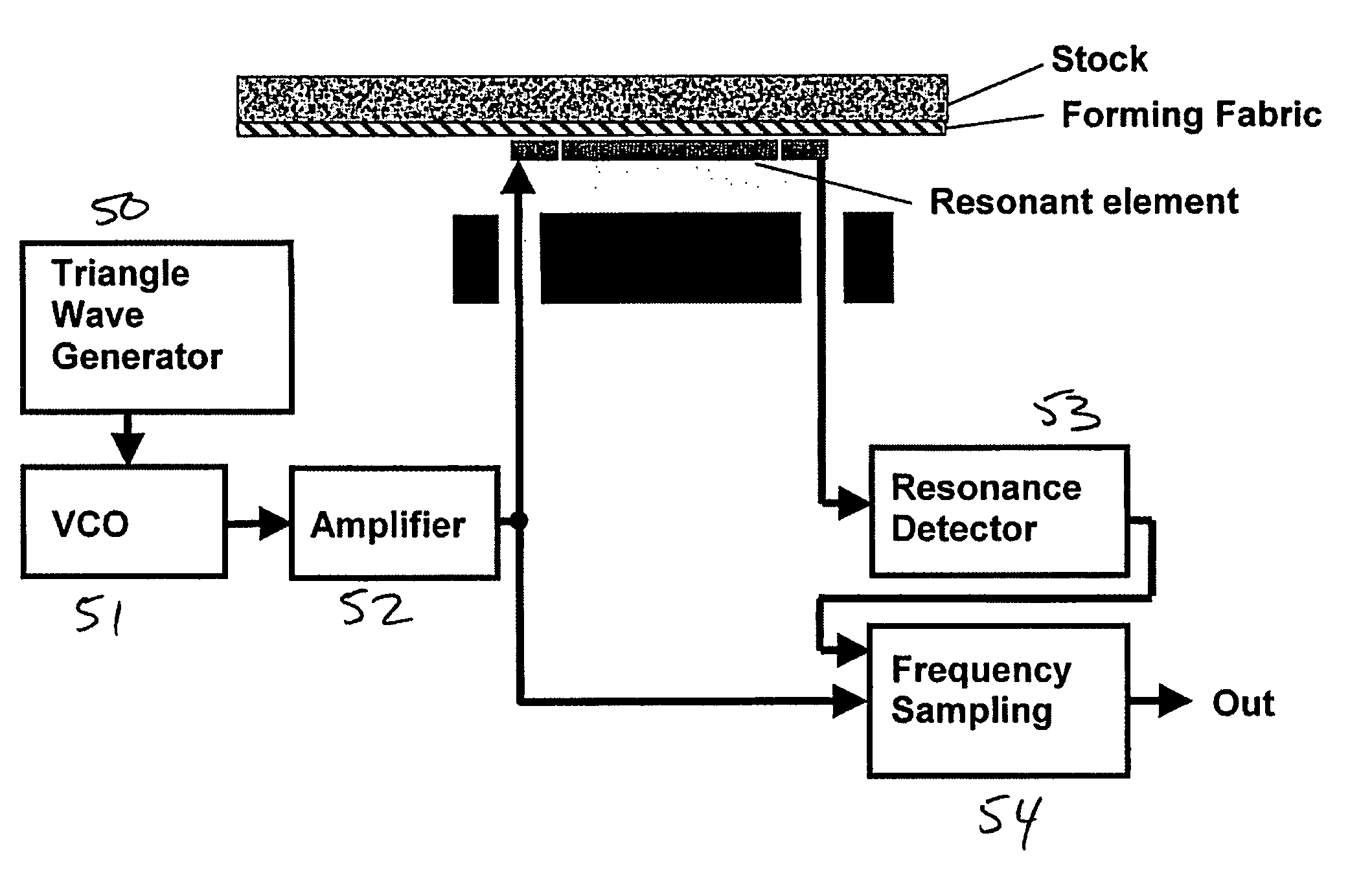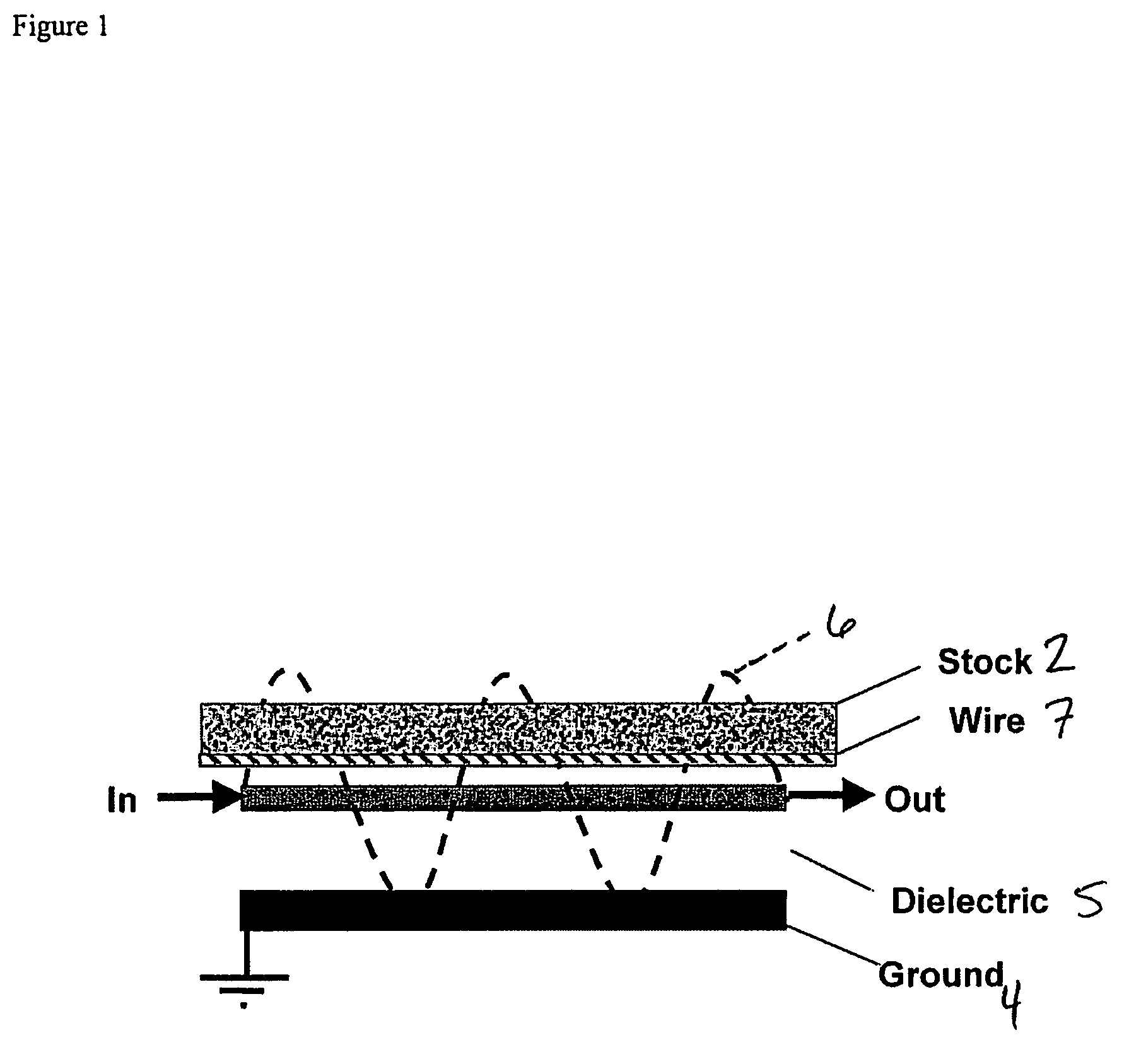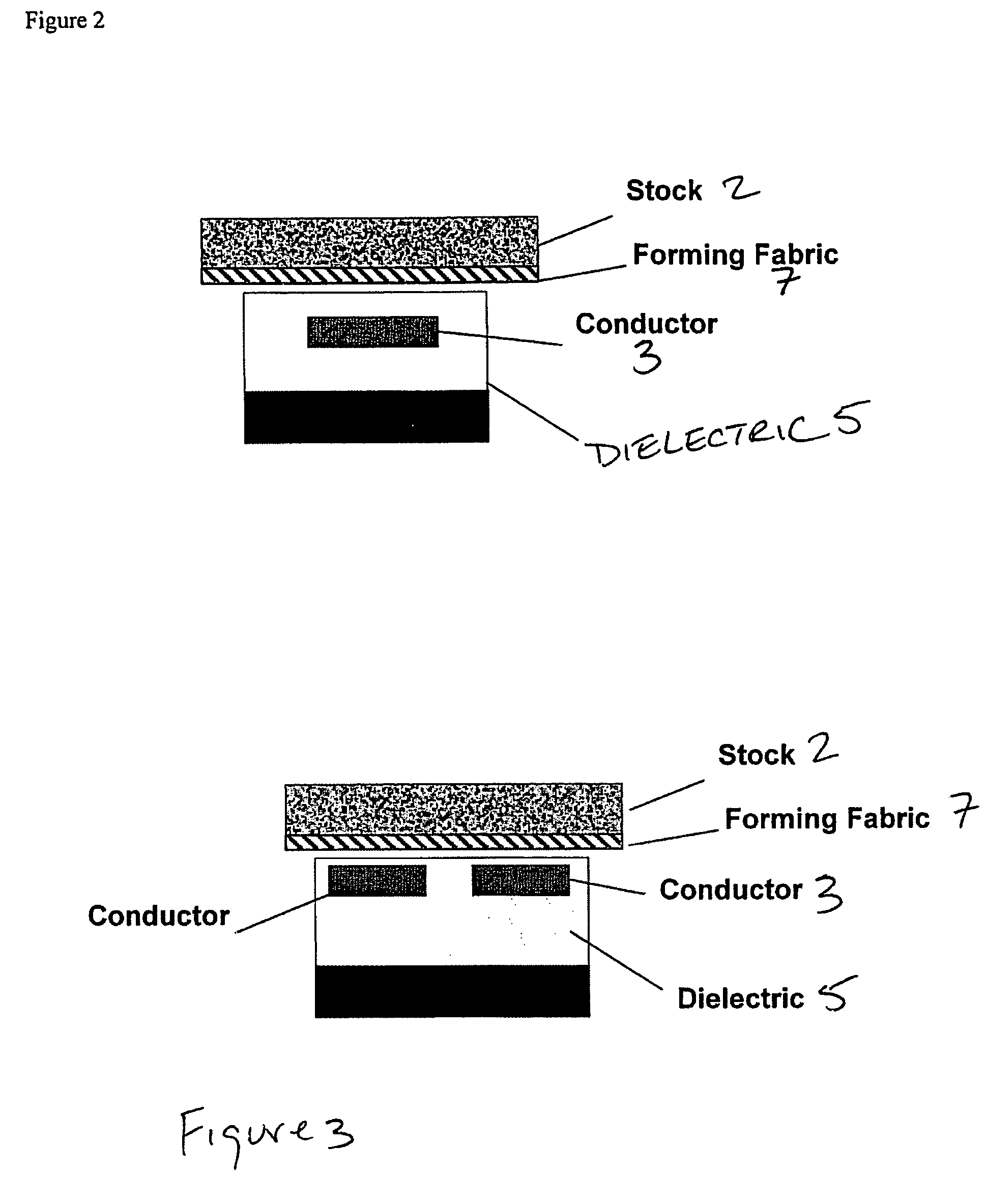Microwave water weight sensor and process
a micro-wave water weight and sensor technology, applied in resistance/reactance/impedence, instruments, papermaking, etc., can solve the problems of high measurement noise, limited devices, and inability to use after dry lines, and achieve the effect of reducing the relative dielectric constan
- Summary
- Abstract
- Description
- Claims
- Application Information
AI Technical Summary
Benefits of technology
Problems solved by technology
Method used
Image
Examples
Embodiment Construction
[0033]The particulars shown herein are by way of example and for purposes of illustrative discussion of the embodiments of the present invention only and are presented in the cause of providing what is believed to be the most useful and readily understood description of the principles and conceptual aspects of the present invention. In this regard, no attempt is made to show structural details of the present invention in more detail than is necessary for the fundamental understanding of the present invention, the description taken with the drawings making apparent to those skilled in the art how the several forms of the present invention may be embodied in practice.
[0034]FIG. 1 illustrates a sensor 1 in accordance with the features of the present invention. In particular, sensor 1 can be positioned adjacent the sheet or web 2 supported on a forming fabric (plastic wire) 7 in a sheet forming section, where sheet 2 is almost all water. Sensor 1, which is a microwave element, includes ...
PUM
 Login to View More
Login to View More Abstract
Description
Claims
Application Information
 Login to View More
Login to View More - R&D
- Intellectual Property
- Life Sciences
- Materials
- Tech Scout
- Unparalleled Data Quality
- Higher Quality Content
- 60% Fewer Hallucinations
Browse by: Latest US Patents, China's latest patents, Technical Efficacy Thesaurus, Application Domain, Technology Topic, Popular Technical Reports.
© 2025 PatSnap. All rights reserved.Legal|Privacy policy|Modern Slavery Act Transparency Statement|Sitemap|About US| Contact US: help@patsnap.com



